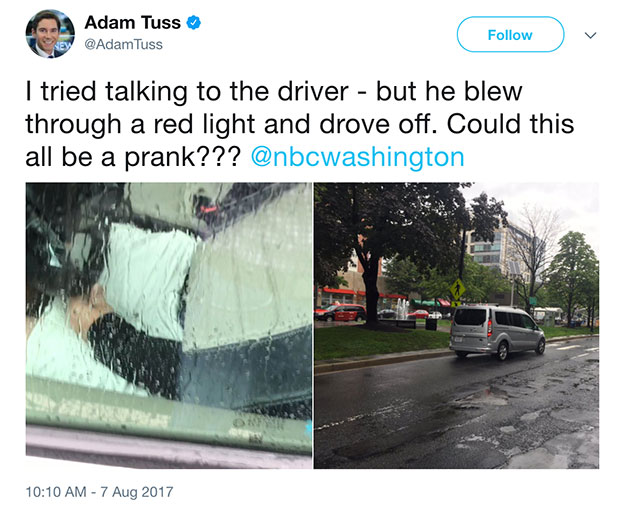It seemed like an ordinary van, driving on an ordinary day, but when the car reportedly ran through a red light—Zoinks!—there was no driver, or even passenger, in sight.
How was the vehicle moving, then? Could it be a g-g-g-g-ghost?
It was a case fitting for Scooby-Doo and the gang. Instead, a daring local reporter stepped in to get to the bottom of the spooky situation.
But as he tepidly approached the mystery machine, he encountered a reveal not even the Great Dane and his friends would see coming: the ghost van wasn’t driverless at all. There was a man behind the wheel, hiding in a car seat costume.
And he would’ve gotten away with it, too—if it wasn’t for those meddling journalists.

The man behind the vinyl, who was never named in the press, was revealed to be part of a study on human reactions to driverless cars, coordinated by the Virginia Tech Transportation Institute.
The stunt was filmed from afar, with the intention of using the footage to gauge people’s reactions to the seemingly autonomous van, the Institute confirmed to the website Wired.
Such candid interactions could be crucial for developing the technology, as removing humans from the helm also eliminates the body language often used to communicate intentions from behind the wheel. While driverless cars will eventually be able to connect with each other to calculate future maneuvers, all of their computing might will be powerless to predict the movements of the bicyclists and pedestrians also sharing the road.
The camouflage factor mitigates any false conclusions that could be drawn from current tests on automated vehicles. Most companies experimenting on the technology have included at least one passenger in the car—usually an engineer—to ensure nothing major goes awry. But those people could inadvertently influence the reaction of others around them through the usual indicators of eye contact, hand waves, or even a discreet smile from the driver’s seat.
While it remains to be seen how self-driving cars will get along with pedestrians, however, the public’s sentiment about the vehicles is anything but a mystery.
People are wary—at best—about the burgeoning technology, according to numerous studies on the subject. They wouldn’t sit in a self-driving car—not even for a Scooby Snack.
But that type of prevailing attitude only makes it more important to hammer out an effective communication strategy between man and the machines that will soon run his roads. It’s just one more case of the creepy driverless cars that has yet to be solved.
